Fast Facts
- When: 21st to 24th August 2024
- Where: York Racecourse
- Watch: ITV
- Official Website: York Racecourse
York’s Ebor Festival is run over four days, it includes some of the biggest names in the racing circuit with the top trainers and jockeys all taking part. The Ebor, the race which lends it’s name to the meeting, takes place on the Saturday and is one if the biggest flat handicaps in the calendar, with a prize fund of £500,000 in 2023.
Other highlights include the Group 1 Juddmonte International on the first day, which can boast legends such as Frankel and Sea The Stars amongst it’s recent winners.
We’ll take a look at the big races below and highlight the best offers available for the meeting.
Existing Customer Free Bets & Money Back Offers
Note: Offers will appear here nearer the event as and when they become available.
About The Ebor Festival
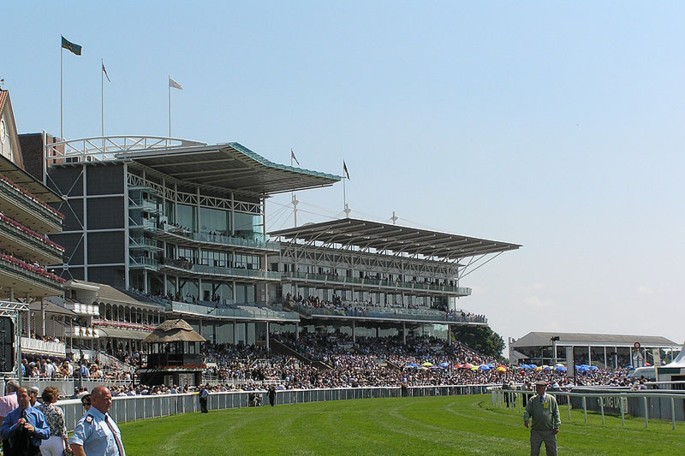
The Ebor Festival takes place at York Racecourse and has been running since 1843, making it one of the oldest meetings in the world. Due to York being located in the north of England, it’s easily the most prestigious meeting in the region.
The racecourse itself is located on an area of ground that was known as Knavesmire in Anglo Saxon times. The meaning of Knavesmire comes from ‘knave’, which is a man of low standing, and ‘mire’, meaning a pasture for cattle. The course to this day is widely referred to as ‘The Knavesmire Course’ and was actually the scene for the hanging of the highwayman Dick Turpin in 1739.
Situated next to the Terry’s of York chocolate factory, the course sees more than three hundred and fifty thousand people come through its doors on a yearly basis. They are there to watch the 19 Group races that York offers up annually, as well as numerous other events that lack the prestige but maintain the excitement of those.
Racing at York is the responsibility of the York Racecourse Committee, which is part of the York Racecourse Knavesmire LLP. The biggest meeting of the year for the course is unquestionable the Ebor Festival, which was introduced in 1843, the year after the Committee had been formed in order to try and stop a downturn in the quality of racing in the city. Within three years a race called the Gimcrack Stakes had been introduced and it proved to be so popular that it has since gone on to be seen as one of the most prestigious races in the calendar.
The Festival has grown in popularity year-on-year and is now one of the most respected meetings in British racing. Indeed, the Juddmonte International was once voted to be the best race in the country by the International Federation Of Horseracing Authorities. The rest of the week is no exception when it comes to the quality races, meaning that York continues to attract more and more visitors and the jockeys and trainers with every passing meeting. It takes place every August, lasting for four exciting days.
The First Horse Racing In York
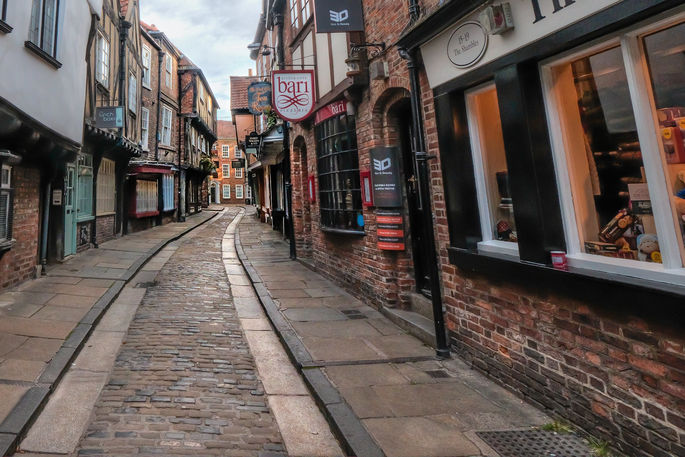
Telling you about Dick Turpin’s hanging and the origin of the name of the ground that the course was built on is one thing, but what else can we tell you about the course’s illustrious past and the city’s links to racing? For starters, it’s believed that racing on the site dates back to the Roman era, with some historians believing that horse racing could have taken place at Knavesmire as long ago as neolithic times.
The city of York as a whole has links to racing that date back to the 1500s. Documents show that the city corporation supported the racing of horses from 1530, with a race for a golden bell having taken place in the Forest of Galtres close to the city in 1590. One of the most famous incidents of a race occurring in York happened in 1607 when the River Ouse froze over and horses were raced from the Micklegate Tower to the Skeldergate Postern.
The Shift to the Knavesmire
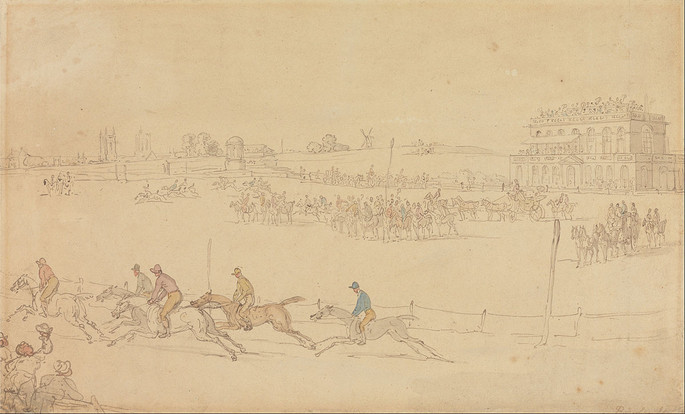
Historians aren’t entirely in agreement on when the formalisation of racing on the current site first happened. The course itself claims that it was in 1730 after flooding had stopped racing from taking place at nearby Clifton Ings, not for the first time. Some historians believe that the King’s Guineas was raced on Knavesmire in 1731 and that was the inaugural running of an official race on the site. The dispute over this matter comes about because of uncertainty of what was happening at Clifton Ings between 1709 and 1731.
Some historians concur with the official view offered by York Racecourse, whilst others believe that there’s evidence to suggest that racing took place at both Clifton Ings and Knavesmire as early as 1709. In ‘History’ by Saunders & Co. it is asserted that racing will have taken place at both locations and that in 1731 everything moved to the one venue. The Knavesmire site was chosen as that venue because it didn’t suffer from as many flooding problems as Clifton Ings. The reliability of the ground meant that racing could become a more serious sport in the city, with the formation of the Great Subscription Purses in 1751 being the first time a course had offered a structured race programme since Newmarket did so.
The Development Of York Racecourse
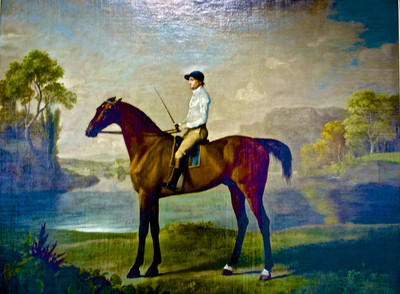
Whilst the Knavesmire wasn’t quite as susceptible to flooding as Clifton Ings, it would be a lie to suggest that flooding never occurred at all. In fact, in 1776 the rain was that heavy that horses were running part of the course with water up to their knees. Even so, the sport proved popular enough for people to keep turning up to watch the racing and by the start of the nineteenth century there were two main meetings in the city and two smaller ones to supplement them.
In 1754 the Marquess of Rockingham suggested that a grandstand be built to accommodate all of the people who were arriving in the city to watch the racing. It was done at a cost of more than £1,000, which was a huge amount of money at the time. The architect was John Carr and when new stands were built in 1890 a decision was made to incorporate Carr’s original design. Over the centuries that followed more and more stands were built at the course, including the Melrose Stand in 1989 and then the Knavesmire Stand. Even after the turn of the millennium new areas have been built, with the Ebor Stand seeing the capacity rise to over sixty thousand.
Ebor Festival Format
The meeting starts on a Wednesday and runs through to the Saturday of that week.
The first day is widely known as the Juddmonte International Day, which is in honour of the feature race of the day, the Group 1 flat race called the International Stakes. The prize fund includes a whopping purse of £1,000,000, which is the highest across all four days. On top of that, the inclusion of the Great Voltigeur Stakes with its £250,000 purse and the Acomb Stakes and its £165,000 purse make this a lucrative opening day for punters, bookmakers and trainers alike.
The Thursday is known as Ladies Day at the Ebor Festival and includes the Group 1 flat race the Yorkshire Oaks. The Oaks runners will compete for a purse worth £500,000 and is raced across one mile, four furlongs. It is a race for horses aged three-year-old and upwards. On top of that there’s also the Group 2 Lowther Stakes, which has a purse of £267,500.
Friday is Nunthorpe Day at the Ebor Festival, with the feature race coming in the form of the Nunthorpe Stakes that lends the day its name. This race offers up a purse of £533,750 for the entrants and is run at the shortest distance of the meeting, measuring just five furlongs in length. Accompanying this are the Lonsdale Cup with a prize fund of £250,000 and the Gimcrack Stakes offering up a prize fund of £267,500.
The meeting comes to a close on the Saturday, which is known as Ebor Day. This is one of the most popular days for racegoers, often seeing capacity crowds throughout. The highlights come in the form of the Ebor Handicap worth a staggering £500,000 with £300,000 to the winner. There’s also the City Of York Stakes with a purse of £500,000. All of the purses mentioned were correct for the 2023 meeting, though are obviously subject to change.
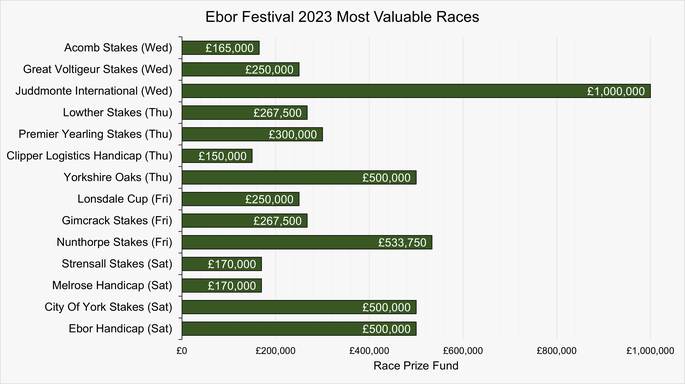
Interesting facts
The Ebor festival is one of the oldest race meetings in the UK, dating back to 1843. It has also pulled in some of the biggest crowds in racing throughout this time.
Jockeys such as Frankie Dettori, AP McCoy and Jamie Spencer have all been successful at previous meetings, whilst trainers such as Willie Mullins, Sir Henry Cecil, Mick Channon and Paul Nicholls have had numerous winners at the Ebor Festival. There’s far more to tell you about than just that, of course, with the following being a list of some of the best facts we’ve been able to uncover:
- One of the worst tragedies to hit the North of England, the Peterloo Massacre, actually occurred because the local military commander was absent from his troops as he was watching two of his horses running in races at York and his deputy wasn’t experienced enough to control the crowd and his own men
- Thankfully he wasn’t in charge in 1982 when Pope John Paul II visited York Racecourse, attracting crowds of nearly two hundred thousand people
- Two years after the Pope visited there was another reason for crowds to flock to the course – Echo & The Bunnymen played the first concert that the Racecourse had ever held
- In 2014 The Tour de France started from York Racecourse
- Ascot Racecourse was closed for redevelopment in 2015, so York Racecourse hosted the meeting known as Royal Ascot
- In 2008 the rain was that bad that the course was waterlogged. For the first time in the Festival’s history the entire event had to be cancelled as it was unsuitable for racing
- The venue hosted the St. Leger the following year for similar reasons
- York Raceday Radio is a radio station that belongs to the racecourse and be heard for up to ten miles from the site
- In 1997, 2003 and 2017 the site was named as the Racecourse of the Year
- Around one hundred and fifty thousand people turned up to watch Voltiguer take on the Flying Dutchman in 1851, setting the record for attendance at the course for horse racing
- As well as the Ebor Festival, the course also hosts an August Meeting early in the month, Meetings in June and July and a Festival in the Spring
- The Juddmonte International has been ranked as the number one thoroughbred race in Great Britain. As a result, when Australia, Frankel and Declaration of War battled in the race they were taking part in the strongest horse race in the world at that moment
- Ahead of the Summer Olympics in London, twenty thousand people watched former Olympian Harvey Smith carry the Olympic Flame along York Racecourse’s home straight
- The Princess Royal rode a winner in the Queen Mother’s Cup at the course in 1988
